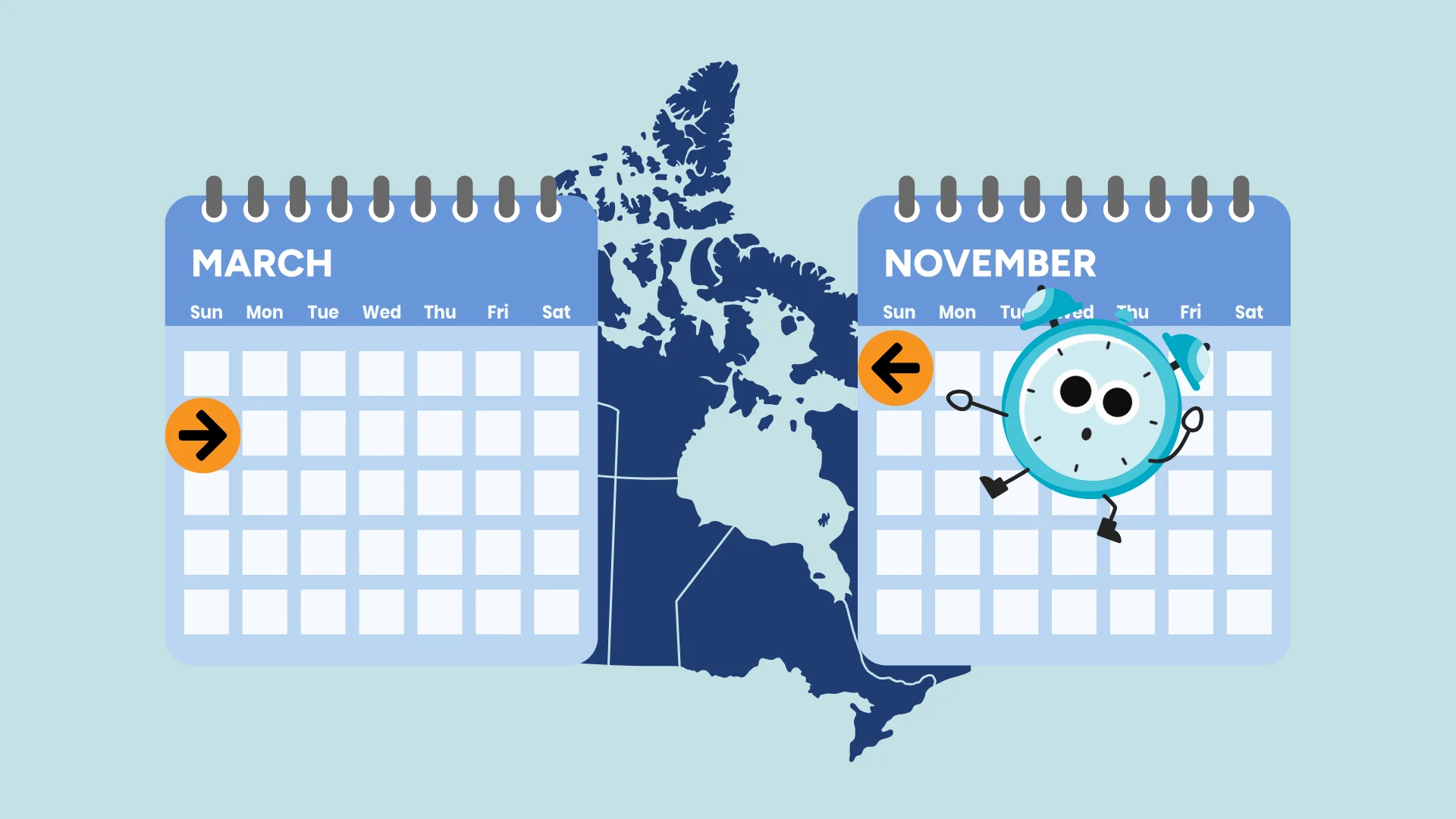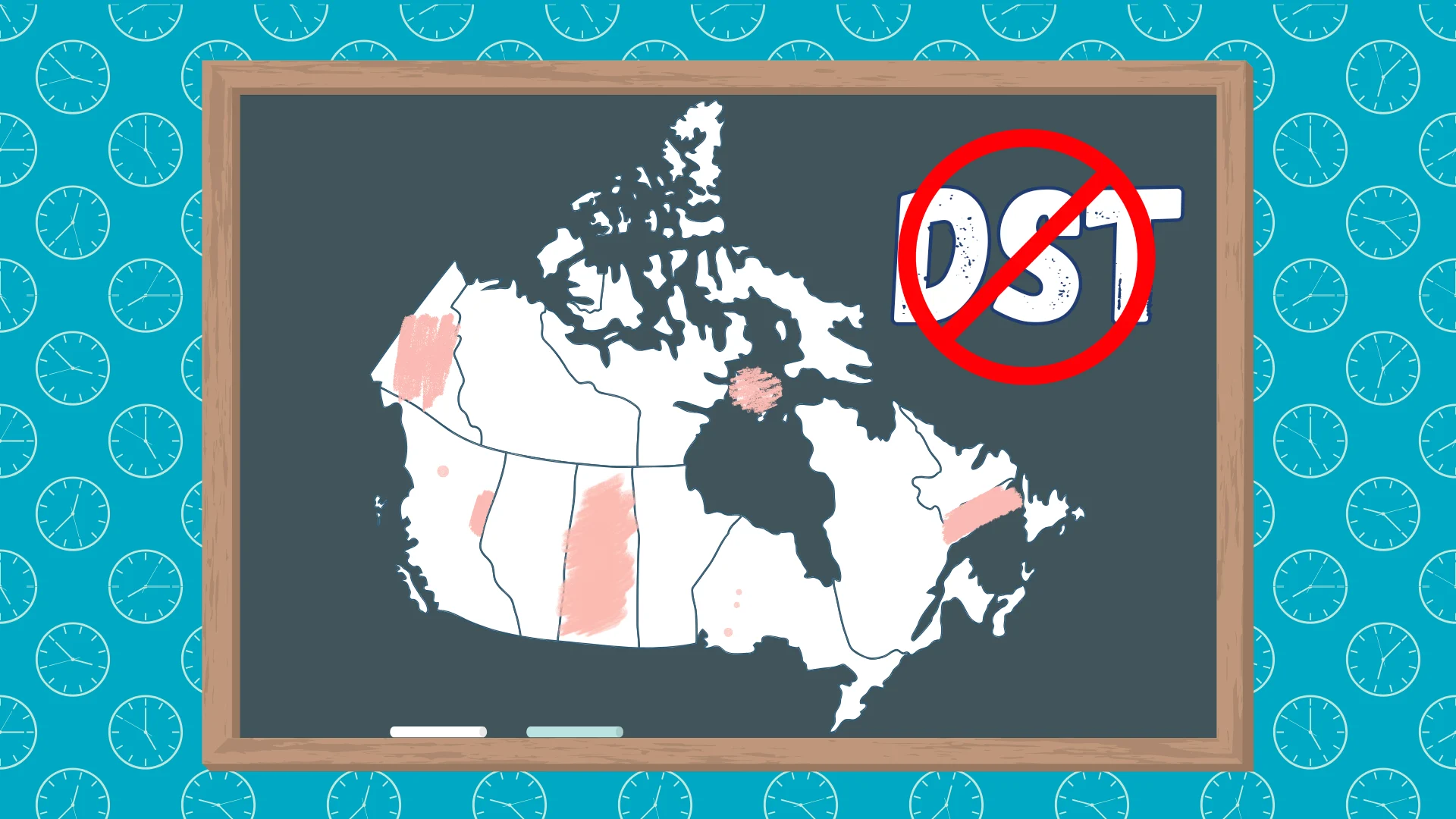
Why do we 'fall back?': The story of Daylight Saving Time
Learn the history behind the biannual time change.
Millions of Canadians change the clocks forward on the second Sunday of March, when daylight saving time starts, and back on the first Sunday in November, when it ends at 2 a.m.
Daylight saving time (DST) is a practice that involves changing the clocks to maximize the use of light available during the summer so that darkness falls at a later time of the clock.
DST is often associated with farmers wanting more light for harvesting, but it was first introduced to save energy during World War One.
Now, as of 1987, DST isn’t federally mandated; that’s why not everyone in Canada will be changing the clocks.

Areas highlighted in red represent parts of Canada that do not observe DST. (April Walker/The Weather Network/Canva)
Famously, Saskatchewan does not observe, meaning it has the same time as Calgary in the winter but Winnipeg in the summer.
The one exception is the Lloydminster area, which joins in on the time change.
The Yukon, parts of Northern B.C., eastern Quebec, some regions in Ontario, and most of Nunavut, also do not adjust the clocks twice a year.
Quick DST facts
The time change can change the birth order of twins, on paper at least. It happened in 2016, when Emily and Seth Peterson of West Barnstable welcomed their sons Samuel and Ronan on November 6 in Cape Cod.
Samuel was born just before the 2 a.m. time change. Ronan arrived 31 minutes later, but because the clocks had already fallen back one hour, his official birth time was recorded as 1:10 a.m. instead of 2:10 a.m.
Violent crime in the US goes down 10-13 per cent during DST, according to a 2015 study.
Candy manufacturers lobbied for DST to be extended to Halloween so young trick-or-treaters could stay out later.
Port Arthur, Ontario (now part of Thunder Bay) was the first municipality in the world to establish DST on July 1, 1908.
It’s Daylight Saving Time and not “Daylight Savings Time,” with an extra 's' at the end.
Will daylight saving ever end?
Love it or hate it, the biannual change doesn’t seem to be going anywhere quickly. Both Ontario and B.C. have passed bills to throw out the time change, but they won't go through with it unless neighbouring states and provinces to make the change as well.

B.C. has pledged to end DST if Washington, Oregon, and California follow suit. Ontario says it will end DST if Quebec and New York promise to do the same. (April Walker/The Weather Network/Canva)
So, let your phone make the time change for you and enjoy that extra hour of sleep. Or just go about your night as normal if DST is a thing of the past where you live.